Five Female Explorers
Five Female Explorers and their Adventures There are many female explorers who have been forgotten or are not as widely remembered as their male counterparts–Gertrude Bell, for example, has been overshadowed by her male colleague,…
8 Apr 19 · 12 mins read
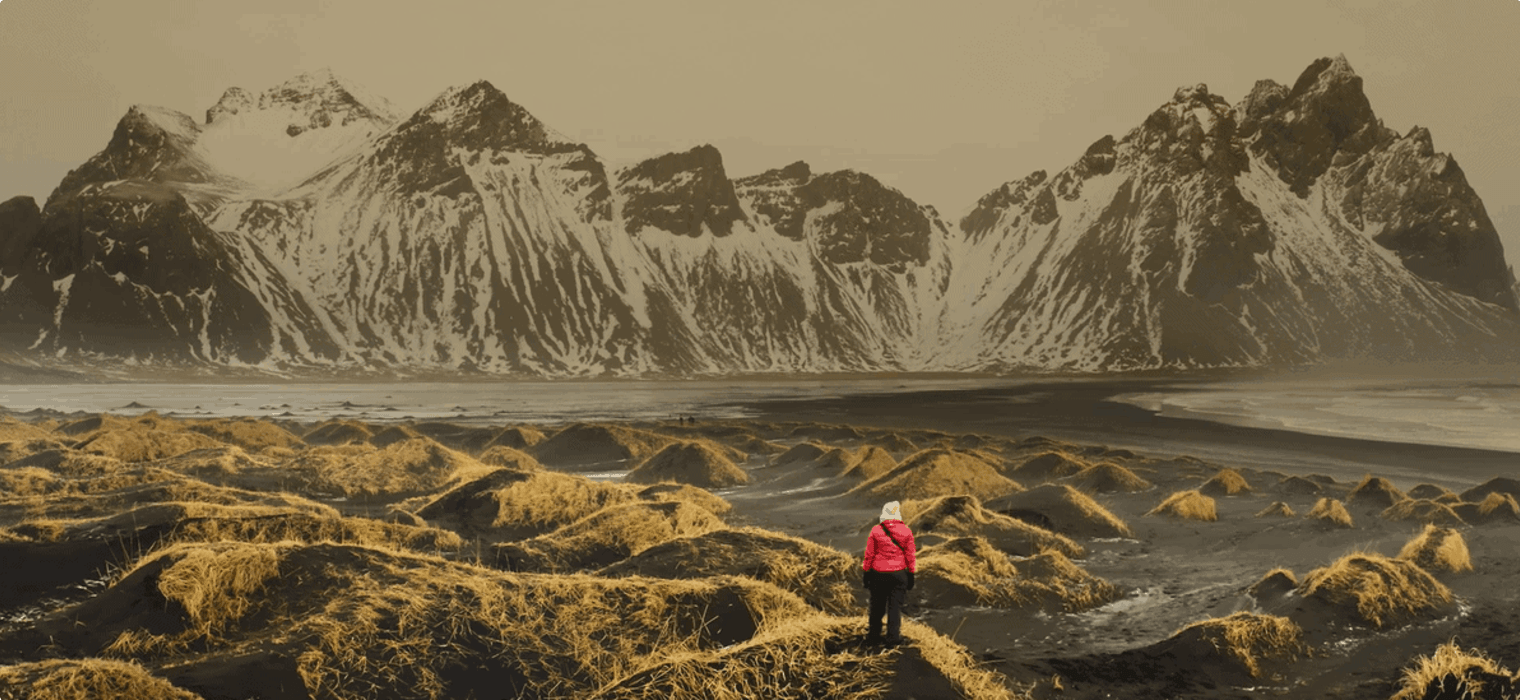
Five Female Explorers and their Adventures
There are many female explorers who have been forgotten or are not as widely remembered as their male counterparts–Gertrude Bell, for example, has been overshadowed by her male colleague, Lawrence of Arabia. In this post, we present to you five female explorers and their incredible adventures all over the globe.
- Gertrude Bell
- Nellie Bly
- Isabella Bird
- Bessie Coleman
- Junko Tabei
Gertrude Bell (1868-1926)
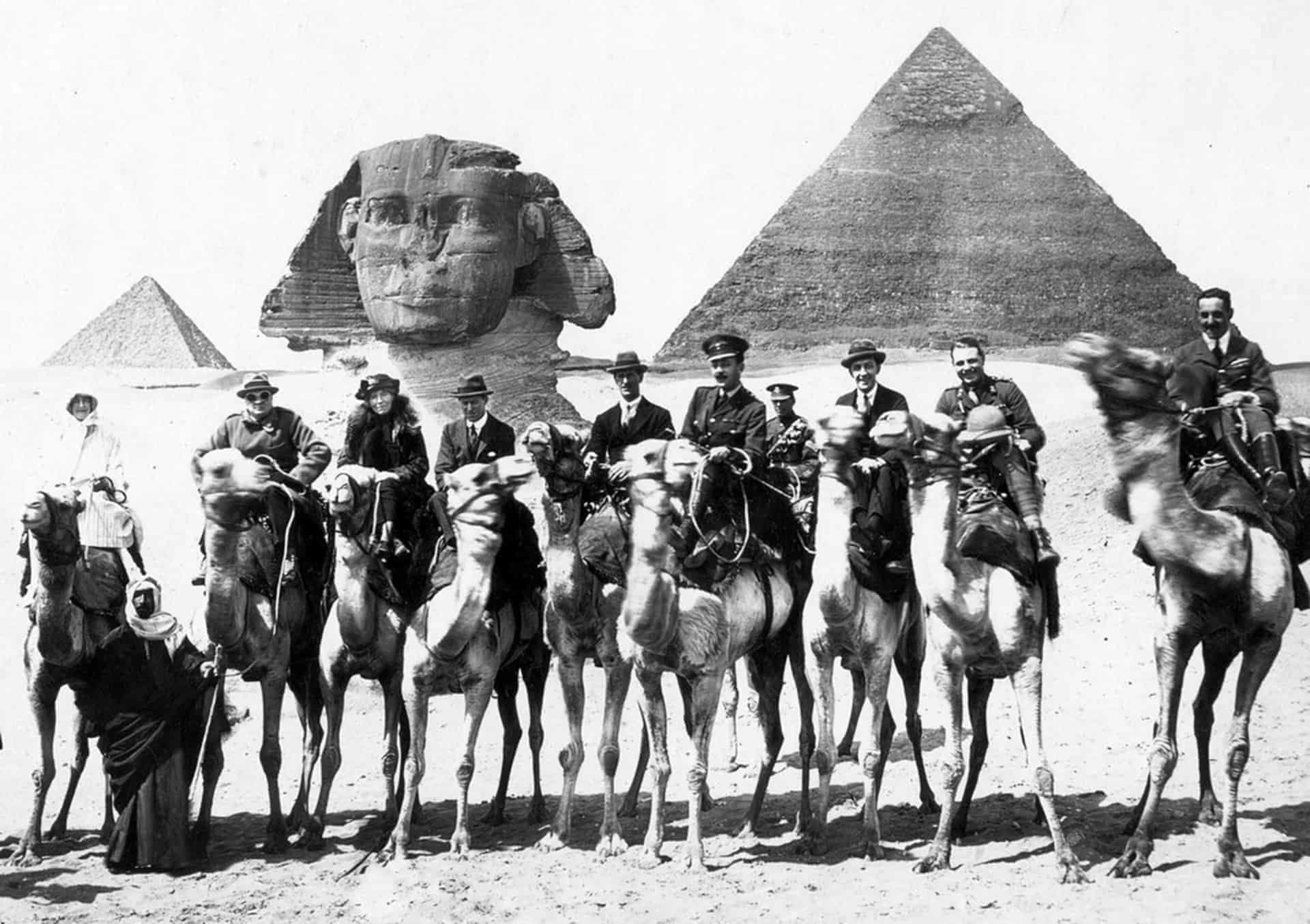
Gertrude Bell was the first woman from the West to travel across Arabia. Her intimate knowledge of the region that made her instrumental in shaping British imperial policy in the Middle East, including defining the borders of the modern state of Iraq following World War I.
Of course, as Tim Arango wrote in 2014, her decisions as an agent of empire advancing her own country’s interests on foreign soil, contrasted with Iraq’s political troubles in recent years, “hold cautionary lessons for those seeking to bring stability or seek advantage in the region now.” In any case, despite this “textbook case of imperial meddling” she is remembered in Iraq with respect and affection due to her devotion to the country and the culture.
From Oxford to Arabia
Before she travelled across Arabia, Bell was already making waves in her native England. Born to a family of industrialists whose wealth supported her education and travels, Bell became the first woman to ever be granted a first-class Honours degree in Modern History at Oxford University. After graduating at the age of 19, she travelled to Persia in 1892 to visit her uncle who was posted as the British ambassador in Tehran. This sparked a lifelong love for the Middle East and a passion for travel. She travelled around the world, mountaineering in Switzerland and visiting pre-state Israel, Damascus, and Baghdad, taking photographs and excavating ruins as an amateur archaeologist. She also became fluent in Arabic and Persian.
She mapped Arabia as she travelled and did not shirk from exploring even politically volatile regions. In 1909, while travelling in Syria, Bell met and advised archaeologist TE Lawrence, now more well-known as “Lawrence of Arabia”. She described her experiences in the books The Desert and the Sown (1907) and Amurath to Amurath (1911).
British Army and the Council of Cairo
Her intimate knowledge of the region caught the attention of British Army Intelligence. She would meet Lawrence again in 1915, when they were both assigned to the Arab Bureau, the British intelligence headquarters in Cairo. At this time, Bell was the only female political officer in the British forces. She and Lawrence formed alliances with the Arabs to help British troops move across the deserts and push back against the Ottoman Empire. While the Arab Revolt was being fought on the ground, Britain and France, sure that the Ottoman Empire would fall, were already negotiating which parts of West Asia would go to which country in the clandestine Sykes-Picot agreement.
In 1917, the British took Baghdad and by late 1919 was already dismantling the hold of the Ottoman Empire in the region. Bell was assigned to analyse the situation in Mesopotamia, the historic region between the Tigris and Euphrates rivers that to modern eyes would appear to cover the territories of several states: parts of Kuwait, Saudi Arabia, Syria, Turkey, and most of Iraq.
Bell spent the next ten months writing her official report “Review of the Civil Administration of Mesopotamia”, still hailed in British Parliament today as a masterful white paper, wherein she advocated for Arab self-rule. She was the only woman invited to the 1921 Council of Cairo, where she joined Lawrence, Winston Churchill, and 37 others to discuss the fate of Mesopotamia.

In this conference, it was decided that Prince Faisal Hussein, son of the Sharif of Mecca, should become king of a newly created state, to be called Iraq. Prince Faisal was the former commander of the Arab forces that helped the British during the war, and was King of Syria until he was deposed by the French. The prince was Bell’s choice, believing he was the Arab tribal leader that could unite its people with his diplomatic skills and respected lineage.
Shaping Iraq
Faisal was a follower of Sunni Islam, now ruling as monarch over a majority Shia Muslim population in the new state. Sunni and Shia Muslims share fundamental Islamic beliefs but differ on many aspects of the faith, including who should be considered a Muslim leader. Sunni Muslims believed leadership was not a birthright and that a capable leader should be elected, while Shia Muslims believed the leadership should stay within Prophet Muhammad’s family. Bell and other British officials were prejudiced against the conservatism of Shia Muslims and described ethnic Iraqi Kurds as ungovernable. This worldview led them to appoint Faisal, and other Sunni Arab elites to government and ministry offices. This would have a lasting effect on Iraqi politics for the many years to come.
She remained a close adviser to King Faisal I and was eventually made Honorary Director of Antiquities. She wrote the first Antiquities laws for Iraq, insisting that any antiquities excavated should stay in-country, as opposed to being shipped out to the archaeological team’s country of origin. She founded the National Museum of Iraq based on this advocacy.
Gertrude Bell died in the city of Baghdad at the age of 57 due to an overdose of sleeping pills, either by accident or by intention. She was buried in the capital of the country she helped create.
Nellie Bly (1864-1922)
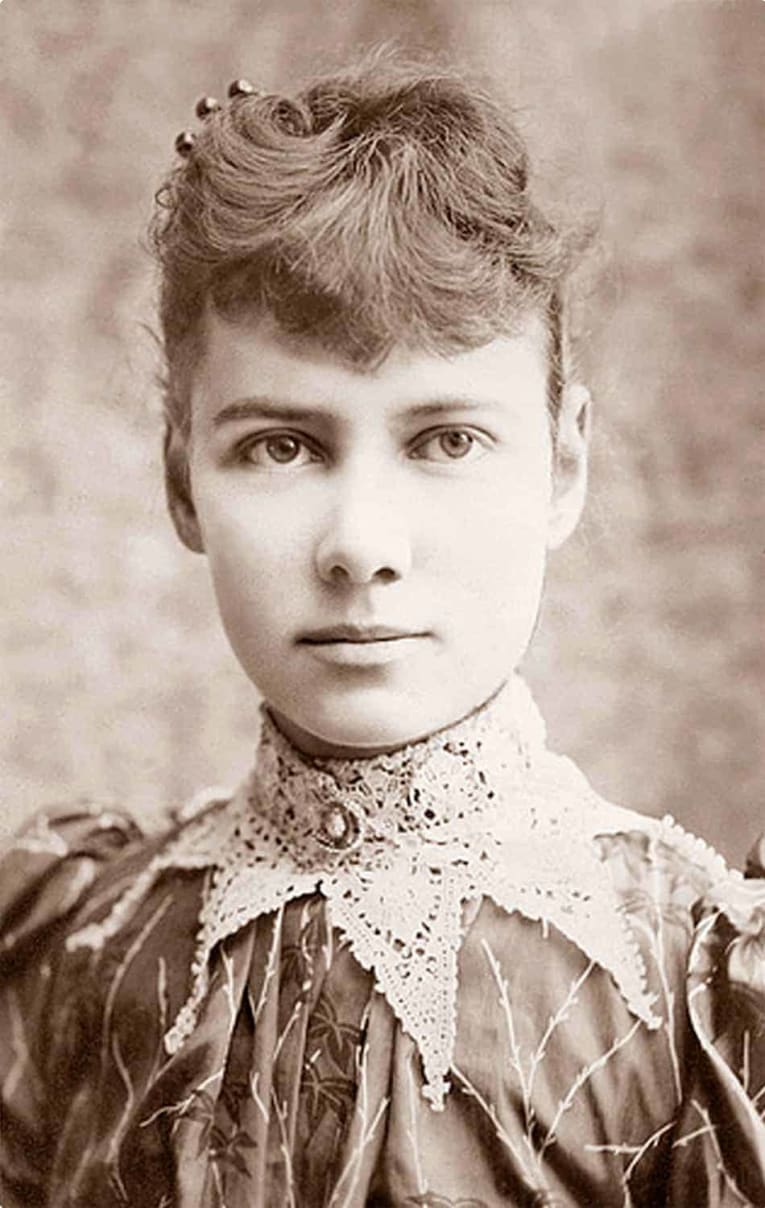
Born Elizabeth Jane Cochrane, pioneering American investigative journalist Nellie Bly was more well-known by her pen name, and by her 72-day race around the globe to beat the fictional record set by Phileas Fogg in Jules Verne’s Around the World in 80 Days.
Before her record-breaking world tour, Bly grew up in Pittsburgh, her education all of one term at boarding school before she had to drop out due to lack of funds. A column in the Pittsburgh Dispatch called “What Girls Are Good For” (which, according to the article, was simply giving birth and keeping house) angered her so much that she penned a letter to the editor. Her rebuttal was printed in the newspaper, and the Dispatch editor, impressed by her writing, offered her a job as a columnist.
Now writing as Nellie Bly, her articles for the Dispatch covered the working conditions of female factory workers in Pittsburgh, life in the slums, and similar topics. When the newspaper received complaints from factory workers because of her critical articles, Bly was re-assigned to the women’s pages to write about fashion and society, which were the usual topics given to female journalists. Dissatisfied, she moved to Mexico at the age of 21 and sent back dispatches as a foreign correspondent, writing about corruption and the conditions of Mexico’s poor. At first she travelled to Mexico with her mother, but later travelled unchaperoned, which at the time was highly unusual (and scandalous).
Her reportage put her on the radar of Mexican officials, and she returned to the United States to avoid persecution, later publishing her collected dispatches in the book Six Months in Mexico (1888).
Nellie in a Mad-House
In 1887, Bly left Pittsburgh for New York City, where she found work at Joseph Pulitzer’s flagship newspaper, New York World. One of her first undertakings for the paper was her exposé of the New York City Lunatic Asylum on Blackwell’s (now Roosevelt) Island in the East River–a sharp, insider look she managed to pen by literally getting herself committed to the asylum.
Feigning insanity, she was taken on a ferry to Blackwell’s Island, where she took copious notes. She dropped the act after a few days but was not believed to be mentally fit. She would have been trapped on the island if not for the help of an attorney sent by the newspaper, who arranged for her release. On October 9, 1887, the World ran the first instalment of her series of articles, which would later be collected in the slim volume, Ten Days in a Mad-House (1887).
I was never so tired as I grew sitting on those benches. Several of the patients would sit on one foot or sideways to make a change, but they were always reproved and told to sit up straight. If they talked they were scolded and told to shut up; if they wanted to walk around in order to take the stiffness out of them, they were told to sit down and be still. What, excepting torture, would produce insanity quicker than this treatment? Here is a class of women sent to be cured. I would like the expert physicians who are condemning me for my action, which has proven their ability, to take a perfectly sane and healthy woman, shut her up and make her sit from 6 A. M. until 8 P. M. on straight-back benches, do not allow her to talk or move during these hours, give her no reading and let her know nothing of the world or its doings, give her bad food and harsh treatment, and see how long it will take to make her insane. (from Ten Days in a Mad-House. Source.)
Her descriptions of the inhumane treatment of mentally ill patients at the asylum led to a grand-jury investigation and improvements in patient care.
Around the World in 72 Days
The articles made Bly an overnight sensation. In 1888, she suggested to her editor that she take a trip around the world, in hopes of breaking Verne’s fictional record of 80 days. Her editor was at first reluctant, telling her that she would need a chaperone, travel with too many bags, and anyway, “no one but a man can do this“, to which Nellie replied, “Start the man, and I’ll start the same day for some other newspaper and beat him.”
Not wanting to lose his star reporter, her editor conceded, and Bly sailed from New York on November 14, 1889 without a chaperone. She travelled more than 40,000 kilometres, riding ships, trains, rickshaws, and horses, even meeting Jules Verne on a side trip. Bly sent regular dispatches by cable, and the World ran a guessing contest: whoever came closest to guessing Nellie Bly’s time around the world would win a trip to Europe. Bly’s popularity and the novelty of the quest led to the contest having nearly one million entries.
When she arrived by train in New Jersey on January 25, 1890, she was greeted by fireworks, brass bands, and a crowd of supporters. Her time was 72 days, 6 hours, 11 minutes, and 14 seconds. Her book about the journey, Around the World in Seventy-two Days (1890), was a popular success.
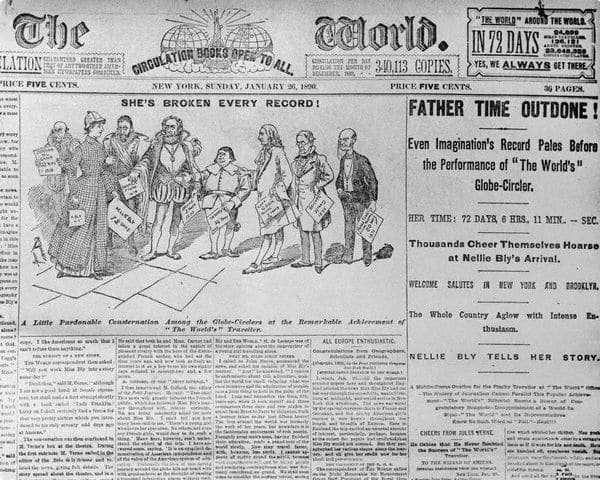
At the age of 31, Bly married 73-year-old millionaire Robert Seaman. She retired from journalism and took over the reins of Seaman’s company, Iron Clad Manufacturing, upon his death in 1904. Nellie would return briefly to newspaper work in 1920, and die of pneumonia in 1922.
Isabella Bird (1831-1904)
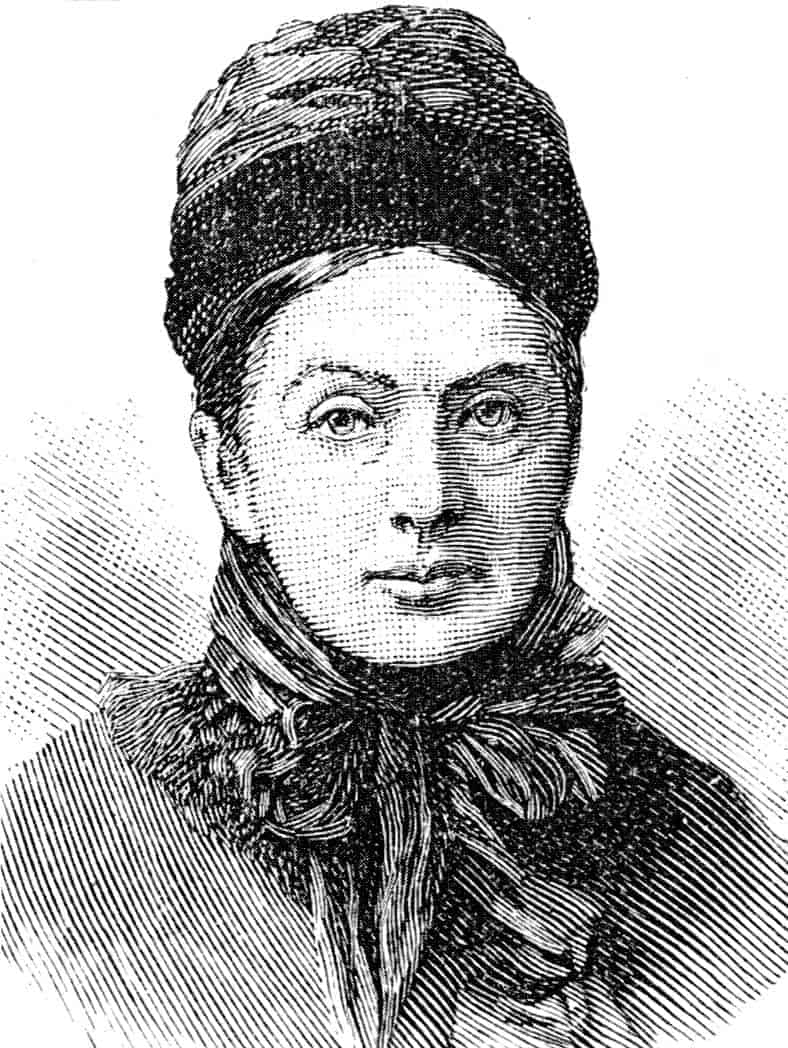
While Gertrude Bell and Nellie Bly started travelling at a young age, 19th century British explorer Isabella Bird only began travelling extensively in middle age. A daughter of an Anglican clergyman, Bird’s childhood was marked by frequent moves and ill health. She was a frail and small child and suffered ailments at an early age. At the age of 19, a fibrous tumour was removed from her spine. The operation was only partially successful, and she suffered from insomnia and depression.
Her doctors had recommended the open air (which led to her learning to ride and row), but now she was urged to travel to take her mind off her illnesses. In her 20s, she sailed to North America and stayed for several months in eastern Canada and the United States. The letters she wrote to her sister, Henrietta, became the basis for her first book, The Englishwoman in America (1856).
After her parents passed on, she began travelling in earnest. At 41, she toured Hawaii, New Zealand, and Australia. In Hawaii, she switched from riding sidesaddle to straddling a horse as a man would, which helped her back problems. She rode this way in the Rocky Mountains, covering nearly 1300 km (800 miles), where she rode through a blizzard, got snowed in, fell in love with an outlaw. Her experiences were covered in her most famous book, A Lady’s Life in the Rocky Mountains.
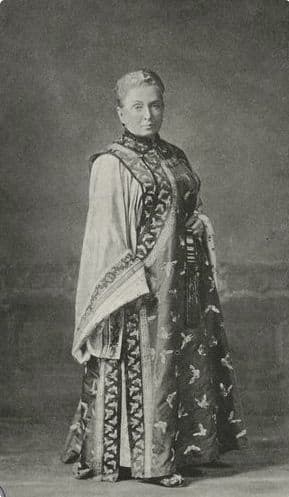
In 1878, she explored Asia, travelling to Japan, Hong Kong, Vietnam, Singapore, and the Malayan Peninsula. After her beloved sister died, Bird married her doctor, John Bishop, but he too would die only five years later. She set off again, this time to India and Persia. She would continue travelling until the age of 72, when she returned from Morocco. Her articles and books made her a household name, and in 1890 she became the first woman to be elected a Fellow of the Royal Geographical Society.
Bessie Coleman (1892-1926)
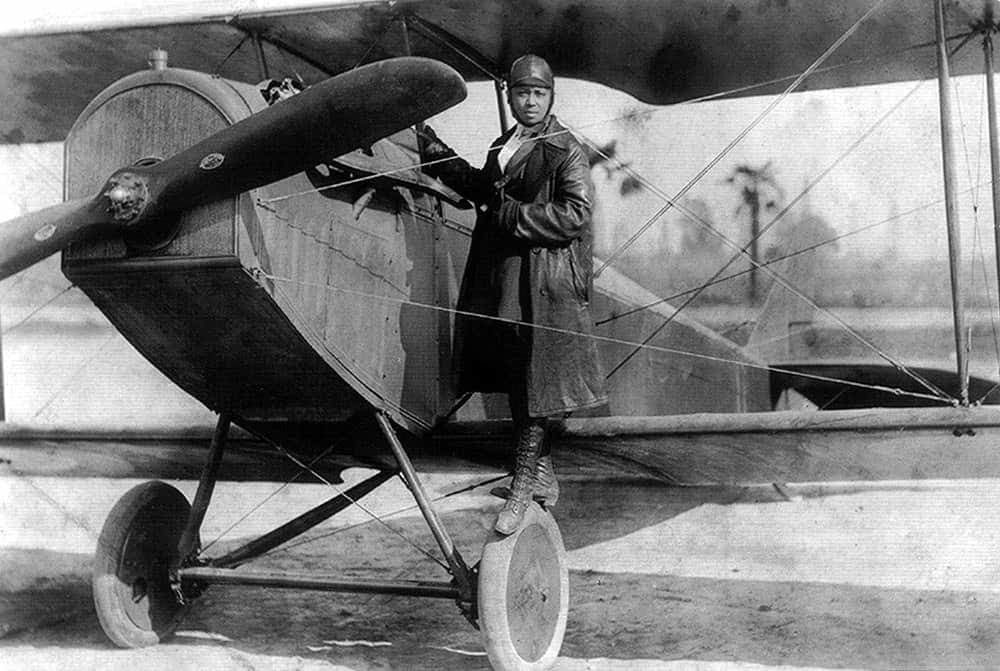
The daughter of an African-American maid and a Native American sharecropper, Bessie Coleman succeeded against gender and racial discrimination to become a civil aviator. Though she died at the age of 34 in a plane crash, her life and pioneering role became an inspiration to many.
Coleman grew up in Jim Crow America, with many opportunities kept out of her reach. She helped her mother pick cotton and wash laundry to earn extra cash, and attended school in a one-room shack more than six kilometres from home. At the age of 23, she moved to Chicago to live with her brothers. Her brothers served in the military during World War I, and told her stories of female French aviators. This sparked a dream to fly a plane, but at the time, flight schools in America admitted neither women nor blacks, a double stigma that shut this particular door in her face. African-American philanthropist and newspaper publisher Robert S. Abbott encouraged her to study abroad–if France allowed women to fly, then why not just go to France?
Flying in France
She attended night school to learn French, and in 1920 she was accepted at the Caudron Brothers School of Aviation in Le Crotoy, France. Coleman received financial assistance from Abbott and banker Jesse Binga, and a year after, she became the first American woman to obtain an international pilot’s license from the Fédération Aéronautique Internationale. Already achieving an incredible feat, Coleman dreamt bigger: she wanted to own a plane and open her own flight school in order to encourage more women to become pilots. She became a famous stunt flyer, but refused to perform before segregated audiences in the South.
She got her plane, but unfortunately her dream of opening a school would not be realised in her tragically short life. On April 30, 1926, Bessie Coleman took a test flight with a mechanic named William Wills, who piloted the plane. A loose wrench got stuck in the engine of the aircraft. Wills was unable to regain control, and Coleman, who was not wearing a seat belt as she wanted to view the terrain, fell out of the plane when the aircraft spun. She was only 34.
Ten thousand people attended her funeral to mourn her death and celebrate her incredible achievements. In 1977, a group of African-American women pilots established the Bessie Coleman Aviators Club in her honour.
Junko Tabei (1939-2016)

Like Isabella Bird, Japanese mountaineer Junko Tabei was also described as a frail and sickly child but went on to reach greater heights. Literally, in Tabei’s case, as she was the first woman to reach the summit of Mount Everest, and also the first woman to climb all Seven Summits, or the highest peak on every continent.
Tabei was born in the Fukushima prefecture in a Japan still reeling from war and poverty. At the age of 10, she went on a school trip to hike Mount Nasu in Nikko National Park, an expedition which ignited her love for mountain-climbing. She explained this life-changing experience in an interview:
I was shocked to feel a little chilly while we were on the top of the mountain because it was summer…I realised that there are so many things in the world which I have never encountered, and that it is fun to see and learn directly through one’s own experiences. So I became determined to go wherever I could go. (Source.)
However, mountaineering was (and still is) an expensive hobby, so she focused on earning her college degree (English and American Literature from Showa Women’s University in 1962) before forming the Ladies Climbing Club in 1969. It was the first of its kind in Japan, as mountaineering groups at the time were largely male-dominated.
Making History in the Himalayas
Tabei and her club made history in 1970 with the first women-only ascent to Annapurna III in Nepal, a victory which almost never came to pass as the Japan Mountaineering Association first refused them membership. (Membership to the JMA was needed for teams climbing the Himalayas.) Bureaucratic and funding troubles also plagued their plan to climb Mt. Everest, with the alpine community expressing doubt that an all-female expedition could reach the world’s highest peak. They received sponsorship from a major newspaper and TV station, but each member still had to shell out 1.5 million yen.
In 1975, against all odds, Tabei led the all-female expedition up Mt. Everest, accompanied by six Sherpa porters. On May 4, 1975, they were buried in snow in an avalanche, fortunately with no casualties. Undeterred, Tabei and her Sherpa Ang Tsering continued the climb and reached the summit 12 days later, with Tabei becoming the first woman to reach the top of the 8,850-metre mountain. Upon reaching the peak, Tabei said she “didn’t shout anything, but I thought: ‘Oh, I don’t have to climb anymore.'”
Seven Summits
But of course she did. she would continue to conquer more peaks and in 1992, she completed the Seven Summits with her ascent of Jaya Peak in Indonesia.
In 2000, she went back to university and earned a degree in Environmental Science, becoming an environmental advocate, concerned with the negative ecological effect climbers and tourists have on mountains, particularly Mt. Everest. After graduation, she became head of the preservation organisation Himalayan Head Trust of Japan.
Even a cancer diagnosis in 2012 did not stop Tabei from climbing. In July 2016, while battling peritoneal cancer, she led a group of young people affected by the Fukushima disaster to Mount Fuji. She would die three months later, in October 2016, at the age of 77.
Click the links to see further information about these incredible women, or check out Wild Women and their Amazing Adventures Over Land, Sea & Air (Head of Zeus, 2019), edited by Mariella Frostrup, and which was used as a starting point for this article.
Many of our participants in Odyssey Traveller are women, either travelling alone or with a companion. The adventures of Isabella Bird and Junko Tabei prove that neither age nor gender should stop anyone from exploring the world. Check out our tours and choose your next destination. All of the tours organised by Odyssey Traveller travel in small groups and are especially designed for the senior traveller.
Below is a collection of some of our more challenging tours for those who like to explore at the edges!
Related Tours

21 days
May, SepExplore the History, Culture & Wildlife of West Africa: Ghana, Togo & Benin
Visiting Benin, Ghana
This small group tour for couples and solo travelers concentrates on the history, culture and wildlife of coastal Central Africa. Meet the friendly local people and come to a greater understanding of just what has made them what they are today.
From A$14,995 AUD
View Tour
22 days
Jun, SepExploring Kazakhstan | Small Group Tour
Visiting Kazakhstan
Visit the largest landlocked country in the world, Kazakhstan. Once part of the Mongol and Russian Empires, Kazakhstan is where man first tamed wild horses on the vast Kazakh Steppe, the dry grassland that dominates its landscape and connects it with Europe and the rest of Asia. A escorted small group tour for mature and senior travellers, couples and solo travellers.
From A$11,995 AUD
View Tour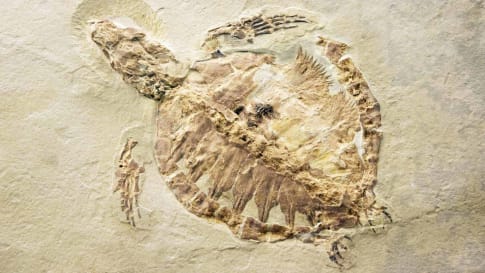
15 days
May, Aug, SepMongolia Dinosaur Dig Tour | Small group tour in the Gobi Desert
Visiting Mongolia
The first dinosaur nest of eggs was discovered in Mongolia during 1928.Following an introduction to Mongolian history, culture and desert landscapes, participants will Experience eight days on a paleontological dig. Small group tour for couples and solo mature travellers interested in Mongolia and Dinosaurs.
From A$15,675 AUD
View Tour
20 days
Sep, AugMongolia Small Group Tour | Discover the history and culture of Mongolia
Visiting Mongolia
Mongolia is a relatively unexplored country for travellers but it has many diverse landscapes to explore, and interesting cultures to become acquainted with, all existing in a country with few cities and towns but with extensive rural lands that remain the domain of nomadic herders. Small group tour for couples or solo travelers
From A$13,750 AUD
View Tour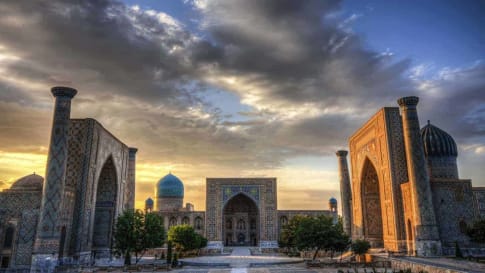
29 days
Aug, May, SepTravel on the Silk Road with Odyssey Traveller | Small Group Tour for Seniors
Visiting China, Kyrgyzstan
The Silk Road is an ancient trade route linking China and Imperial Rome through Central Asia. Few areas in the world remain as unexplored or offer such richness in terms of ancient and modern history, culture, and scenic diversity as Central Asia. Our Small group Silk road tours itinerary explores the Road through remote deserts and mountainous environments as we visit key sites between Xi'an and Bukhara.
From A$18,750 AUD
View Tour

